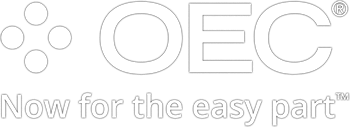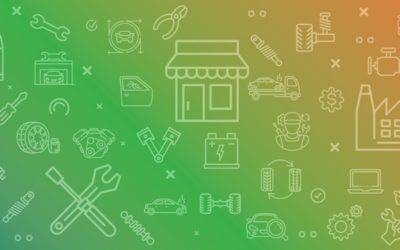By now, most of us have seen signs hanging on the businesses’ doors that say things like “Please be patient, we’re understaffed at the moment.” Or something similar, right? It means resources are tight. And by resources, we’re talking about the employees, their time, and the ability to get work done. In most industries, including repair shops, restaurants, retailers, and others, the resources needed to run the business are getting tighter. For collision repair shops, this understaffing often means the technicians’ availability is limited and shops are running longer cycle times or, even worse, losing business.
Now, you don’t have to hold an MBA from a top-tier business school to understand that providing a bad customer experience by making customers wait longer than expected or providing an experience that turns customers away is not a good business practice and is certainly not sustainable.
In the auto industry, understand that you’re not alone. There’s an ongoing squeeze when it comes to employees, time, and productivity, impacting the business’ overall profitability. The squeeze on these resources is happening everywhere, too. Dealerships are not immune to this type of crunch. Parts departments are running with thinner crews as well. Order processing times are on the rise, leading to shops, at least the ones that have not made the transition to online ordering, sitting on hold for longer than usual and slowing down the repair process.
Kind of sounds like it’s all connected, huh? Well, it is. The stress of having limited resources adds friction to the workflow between shops and dealers. But there is good news: there are tools and solutions that exist to not only help shops and dealers work together in smart, productive ways, but also in new ways that help maximize resources, minimize time-draining tasks, and help improve the bottom line.
For most, saving time really means spending less time on certain tasks. It’s not “saving time” exactly, but rather reallocating time into more productive measures. At the shop, spending less time on the phone, writing emails, or reordering parts means more time for repairs that lead to greater profitability. At the dealership, it means more time with more customers and selling more parts.
No matter where your role falls in the parts purchasing and ordering process – from buyer to seller to installer (two out of three, even?) – it’s unlikely that you’re not looking for ways to get more (there’s that word again – more) out of the resources you have available to you and your team. And since you can’t clone yourself or snap your fingers and double your staff, it’s worth considering the tools that do exist and are designed to help you get more out of the workday.
Here are a few ways to help maximize resources and promote greater profitability – even in times like these, ones full of change and transition – that provide benefits to your shop:
Embrace more efficient parts ordering
Look into tools that provide shops with access to Manufacturer catalog section images and allow users to easily access catalogs and identify parts missing from an estimate. The more accurate and complete you can be early in the repair process, the more time you can save. There’s nothing worse than that sudden moment of realization when you learn you need to go back and rework your project. Tools that give you access to Manufacturer catalog section images help you minimize calls and emails to dealers, freeing up the team – on both ends of the line – to focus on the work that brings in profits. Saving time is great of course, but what you can do with the added time is even more important to think about.
Reduce returns & limit supplements
Available tools and solutions, like parts order scrubbing by VIN, reduce costly parts returns and supplements by flagging parts that don’t fit the VIN. This makes it possible for you to send a more accurate parts order, see flagged parts that don’t fit the vehicle, and view alternative parts, all to help ensure that your parts orders are complete and accurate the first time. If you order a part that doesn’t fit the vehicle you’re working on, you need to – obviously – return that part and submit a new order for the right part.
Meanwhile, the clock keeps ticking, delaying repairs and, likely, the time when you return the vehicle to its owner. This also means you or someone on your team needs to take time away from revenue-generating work to go through the administrative hassle of returning the part, ordering the correct one, and possibly calling the customer to let them know about the delay. Returns and supplements cost you productivity and time – two things most shops don’t have enough of right now.
Access parts availability
While this level of information and insight can vary from dealer to dealer, using a tool that allows you to know what’s in stock helps you effectively schedule jobs and communicate with your customers with greater accuracy. When you have access to parts availability information, you not only know the stocking situation for the parts you need, but you’re able to accurately evaluate your cycle time, provide your techs with more critical uptime for repairs, and manage customer expectations.
That last one is huge, too. Level-setting expectations and then delivering on those promises will likely go a long way toward establishing a strong customer relationship. When you operate a collision shop, your customers have likely experienced something traumatic or, at the very least, inconvenient. The more you can do to provide a smooth process throughout their interactions with your shop, the more your reputation will benefit from it.
Downstream advantages to dealers & vehicle owners
If you’re thinking, “these ideas sound like a great way to extend the resources around my shop,” you’re spot on! They primarily help shops, but there are secondary benefits that go beyond the increased efficiency your shop will experience with a greater ability to accurately order parts, limit returns & supplements, and gain access to part inventory levels.
When you order parts more efficiently, you’re helping the dealer out by allowing them to process these orders faster and with fewer hassles. If the dealership’s parts department runs more efficiently, there’s no doubt that the impact will ultimately circle back around and help you even more in the long run… like the next time you order parts… and the next time. The same is true about returns: you don’t have to process them and neither does the parts department on the receiving end.
Let’s recap real quick:
New parts ordering tools and upgrades to existing solutions help your shop and the dealership’s parts department:
- Limit administrative work (i.e., non-revenue generating tasks)
- Reduce redundant tasks, including parts returns or supplemental orders
- Take advantage of greater efficiency, allowing you to work more productively by knowing if parts are available – limiting phone calls & emails
Plus, there’s the vehicle owner (aka: your customer!): you don’t have to go back and explain that you ordered the wrong part. Awkward conversations that you don’t need to have are the best kind of awkward conversations. When you use tools that provide faster, more efficient ways to order parts AND provide more information, the benefits go beyond your collision repair shop. All of this helps you provide a better experience for your customers in the end.
For information on the tools and solutions outlined above or for insights on additional services, click here.



